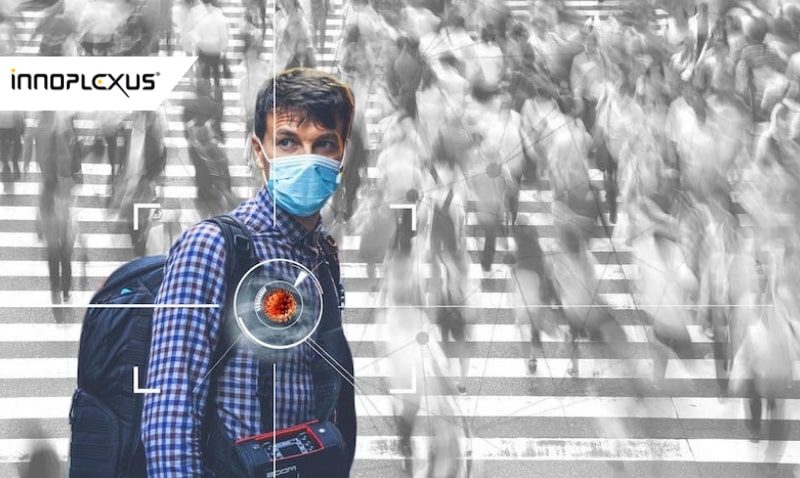
Ontosight® – Biweekly NewsletterJune 17th – June 30th, 2024 –Read More

Ontosight® – Biweekly NewsletterJune 17th – June 30th, 2024 –Read More
May 24
Apr 24

Innoplexus wins Horizon Interactive Gold Award for Curia App
Read More
The Outbreak
Artificial intelligence (AI) technology continues to find itself at the heart of contemporary healthcare global news including the ongoing Coronavirus (COVID-19) outbreak. On December 31, only a few weeks into the outbreak, a Canadian disease surveillance company, BlueDot, was the first organization using AI to notify its clients in advance that a cluster of pneumonia-like cases had emerged in Wuhan, China.
According to the situation dashboard published by WHO as of March 9, COVID-19 has affected more than 110,000 people in 105 countries, areas or territories worldwide. In Europe, Italy has reported 7985 confirmed cases and 463 deaths, the number of infections in both France and Germany has climbed to 1000.
Despite the low mortality rates at 1-4% with a relatively higher transmission rate of 2.5 than normal flu, COVID-19 has panicked global markets. Even though China seems to slowly get back to normal, other countries where infections have soared are seeing emptied shelves in super markets. Some attribute the alleged overreaction to netizens using social media. This could well be the case. Past Studies of SARS coronavirus have shown bad stability of virus at high temperatures and high humidity that may impede its transmission. COVID-19 and SARS virus have a similar sequence and their spherical surfaces are composed of lipid, which are not very heat-resistant. Given the forecast of an extraordinarily warmer spring in Europe, we should probably all remain cautious but at the same time hopeful!
AI is being used to aid the battle against COVID-19 in different phases of the infection:

1. How is AI able to predict the occurrence of Coronavirus cases?
In contrast to laborious human manual labor, it is comparatively easy for AI technologies to sift through vast amounts of data. For example, BlueDot’s AI-driven, disease surveillance platform used natural language processing (NLP) and machine learning (ML) to review news reports in 65 languages and from several other sources. Global airline ticketing data proved to be particularly useful, as it helped predict the spread to Bangkok, Seoul, Taipei, and Tokyo shortly after the outbreak. BlueDot were the first disease surveillance company to send alerts to clients on December 31, at a time when Chinese officials were yet to report any cases.
Bluedot, however, is not the only player in this field. A team from the Harvard Medical School has been using NLP to scan sources, such as messages posted on social media that mentioned specific symptoms and data from doctors and public health organizations that occurred in a specific geographic area. Chinese company, NoSugar Tech, collaborated with the AI company Qihoo 360 to similarly approach this task. However, unlike BlueDot, they not only included flight data but train data, also. A team from Beijing and Oxford University focused on WeChat, while a team from the University of Southampton analyzed historical data from smartphones supplied by Baidu. A virtual quarantine system from the MTX Group is also being tested. They created a disease monitoring and control App in which users can track if they have been on a flight with a coronavirus case.
2. Can AI identify Coronavirus cases?
Diagnosing a patient with the help of AI is currently possible but not very effective. Current AI tools are only able to identify patients after the incubation period has lapsed. This is a significant problem as the incubation period of 2-14 days is comparatively long and there are some indications that Corona spreads during this period already. The best diagnostic approach seems to come from the technology giant Alibaba and Infervision. Alibaba has recently launched its system to identify coronavirus cases from chest x-rays with an accuracy of 96%. Its AI has been ‘trained’ by 5,000 confirmed coronavirus cases. Alibaba and Infervision’s technology can greatly accelerate the diagnostic process in hospitals but will most likely not assist in early coronavirus prevention as the technology has not been tested on pre-symptom coronavirus cases and x-rays are limited to hospitals. Innoplexus is working to use its novel biomarker discovery algorithms for diagnostic biomarkers using AI over just a few hundred blood reports and tests. This will enable early diagnosis of patients in the vicinity of confirmed patients.
More applicable for public use are AI trained tools measuring body temperature or chatbots that help patients with self-diagnosis. Cambridge University, Baidu, Intellifusion, and Megvii developed AI technology that analyzes skin temperature via infrared sensors. These sensors are then placed in densely trafficked areas, like airports, to pinpoint travelers that may be displaying symptoms. Tencent, in contrast, developed a chatbot with the intention of educating the public and helping with self-diagnosis.
3. What impact can AI have in the development of coronavirus treatment?
AI technology is also playing an active role in the search for treatments. The dominant focus area is drug repurposing due to the fact that existing commercial drugs can be used for treatment without lengthy clinical testing. In comparison, a novel compound could take years of testing and have a lengthy drug administration process due to adverse event effects being unknown, which is forcing countries like China to permit administration of anti-inflammatory drugs like Actemra which have no proven benefits in COVID-19.
Deargen collaborated with Dankook University focused on the SARS-CoV 3C-like protease inhibitor using the drug interaction model (MT-DTI) with the intention of inhibiting Coronavirus (COVID-19) from replicating. Research found that SARS-CoV is similar to COVID-19. Targeting the replication process of viruses is often seen as lethal. This can be done by modeling the 3D-structure of a molecule and predicting its binding affinity. Deargen and Dankook University identified Atazanavir, a drug treating HIV infections, as a drug to potentially repurpose. Insilico and Michigan State University also targeted the SARS-CoV 3C-like protease. Research from both studies identified several molecules displaying a high success rate due to binding affinity. Innoplexus is using the research graph approach applying AI over its biological network of information consisting of all available drugs, their functioning and past clinical results, human biological mechanisms etc. to suggest safe drugs that can disrupt the functioning of the virus and render it harmless. Benevolent AI scoured scientific literature using machine learning, focusing on the viral infection process in lung cells to suggest baricitinib, a drug treating rheumatoid arthritis, to be the best fit.
Conclusion
AI technology is playing an active role in the search for treatments of various diseases and outbreaks. Repurposed drugs are already making headway with the coronavirus outbreak. However, AI should always be seen as a solution that supports and accelerates the processes of Prevention, Diagnosis, and Treatment. There are several companies working without or hardly any AI to identify and test potential drug compounds. Gilead, for example, is working with researchers and clinicians in the US and China to determine efficacy of remdesivir, (it’s experimental Ebola treatment), against coronavirus. In China, physicians are testing Abbvie’s HIV combination drug, Kaletra, to treat COVID-19 patients. The true capability of AI is its ability to never tire, identify hidden connections in vast amounts of data, or model thousands of molecular structures. In the end, there is always the need for further testing and making sure that the results apply to the real world.
The cost of developing a new drug roughly doubles every nine years (inflation-adjusted) aka Eroom’s law. As the volume of data…
There was a time when science depended on manual efforts by scientists and researchers. Then, came an avalanche of data…
Collaboration with key opinion leaders and influencers becomes crucial at various stages of the drug development chain. When a pharmaceutical…
Data are not the new gold – but the ability to put them together in a relevant and analyzable way…
Artificial intelligence, or AI, is gaining more attention in the pharma space these days. At one time evoking images from…
Artificial intelligence (AI) is transforming the pharmaceutical industry with extraordinary innovations that are automating processes at every stage of drug…
There is a lot of buzz these days about how artificial intelligence (AI) is going to disrupt the pharmaceutical industry….
Drug discovery plays a key role in the pharma and biotech industries. Discovering unmet needs, pinpointing the target, identifying the…
The pharmaceutical industry spends billions on R&D each year. Clinical trials require tremendous amounts of effort, from identifying sites and…
Training algorithms to identify and extract Life Sciences-specific data The English dictionary is full of words and definitions that can be…
The early 1970s introduced the world to the idea of computer vision, a promising technology automating tasks that would otherwise…
Summary: AI could potentially speed drug discovery and save time in rejecting treatments that are unlikely to yield worthwhile resultsAI has…